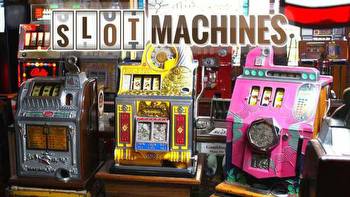Evolution of Slots: The Long Walk From the Old Slot Machines to Mobile Slots
Slot machines did not just start as a mobile game where you can place real money bets on your favorite devices from anywhere and earn passive income. It evolved gradually from simple mechanical devices into complex electronic machines that now offer countless betting options, features and aesthetic themes.
It is pertinent to note that slot machines, since their inception in the 19th century, have turned out to be the most accessed gambling option by bettors due to several reasons, including fast payouts, ease of play, seamless networks and reliability. Now, gamblers can play their favorite slot games on their mobile devices anytime. Since there is a need to play with credible and reputable online slot platforms, interested players can access US slot casinos from CasinoUSA and other recommended review sites to be on the safe side.
To better understand the story of slots, this article takes a closer look at the gradual evolution of slot machines, from the old mechanical machines to the recent modern mobile slots available at online gambling sites.
The Early Days of Slot Machines
The slot game originated in 1895 in San Francisco and was called the Liberty Bell by the inventor, Charles Fey. The model to play this slot machine was straightforward. The gambling machine was designed to possess 3 reels and 5 symbols, which are: horseshoes, diamonds, spades, hearts, and a bell — with one payline.
The mode of playing in the early days of slot machines was traditional. Bettors interested in doubling their money are required to pull a lever and wait for the reels to stop spinning, and when it does, should the symbols align on the payline, the player wins and is awarded a prize, mostly a cigar or a gum.
The success registered by the invention of the slot machine gave way to the increase in the development of the gambling game as many other investors designing their slot machines also rose to prominence. By the early 1900s, gambling games had become common in bars, saloons, and other entertainment establishments.
However, it is not to be denied that there were discrepancies in its operation. A lot of gamblers, with or without the knowledge of the house, manipulate the game’s outcome to increase their chances of winning, thereby taking the normal percentage of winning from 50/50 to 70/30 in favor of the cheater, be it the house or the bettor. Hence, the need to develop it even further, and there came the electromechanical era.
The Electromechanical Era
To reduce the degree of result manipulation, in the 1960s, another set of slot machines was developed. As its name implies, the use of electricity was essential to power the reels to function efficiently. Several betting options like multiple paylines and the ability to bet more than one coin per spin were also introduced to increase gamblers’ chances of winning.
Bally’s Money Honey, which first appeared in casinos in 1963, is remembered as one of the most popular electromechanical slot machines. This device featured a bottomless hopper that could hold up to 500 coins. This made it possible to play for longer periods without having to continually replenish the machine’s coin supply.
In addition, it came with a brand new button dubbed the “hold and draw” button. This button allowed players to stop one or more reels while continuing to spin the remaining reels to increase the chances of winning.
The Digital Revolution
After the electromechanical era came the digital revolution. The developers of the game, fully aware of the competition, decided to get rid of result manipulation and add new and exciting features to keep their relevancy and attract many more potential players.
The digital revolution of slot machines made cheating virtually impossible, as winnings are now solely based on luck, as determined by a computer algorithm. The digital revolution also introduced the option of bonus games where gamblers can win many other amazing prizes.
The Online Era
The constant evolution of technology means that every form of betting needs to be accessible online lest they lose relevance. The ease that comes with placing wagers from the comfort of one’s home is unmatched. Hence, the introduction of virtual versions of slot machines by online casinos.
These machines had even more features than those in physical gambling houses. These features include interactive bonus games, virtual reality VR, and progressive jackpots. Rather than queuing at physical casinos, there is the option of playing 24/7 using PCs, desktops, and mobile phones with constant internet service. The online era also brings about the use of different payment methods, including blockchain technology, to protect the financial privacy of bettors.
Conclusion
It has been interesting to see how slots have developed from the old mechanical machines to the new mobile slots. From Charles Fey’s simple Liberty Bell to today’s sophisticated machines with many features, slot games have changed over time to meet the needs of players. With the rise of digital and online technology, slot machines are now easier to use, more convenient, and more flexible than ever.
And as mobile technology has improved, players can now play their favorite games anywhere, anytime. We can only guess what the future holds for slots as technology keeps improving, but one thing is for sure: they will continue to be a favorite way to have fun for many years. However, players are always advised to bet responsibly and try as much as possible to avoid gambling addiction.
































